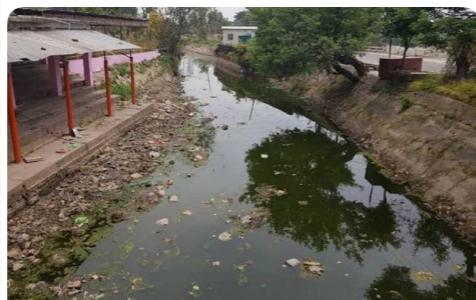Ishfaq Gulzar(CNI).
India is set to significantly upgrade the Ranbir Canal in Jammu, a move seen by experts as part of New Delhi’s broader strategy to tighten control over the western rivers assigned to Pakistan under the 1960 Indus Waters Treaty.
According to a Reuters report citing internal government documents and multiple sources, the expansion would raise the canal’s capacity from 40 to 150 cubic metres per second and extend its reach to nearly 120 kilometres.
The proposal has reportedly gained momentum following the April 22 Pahalgam massacre, with Prime Minister Narendra Modi said to have directed government departments to expedite infrastructure projects along the Chenab, Jhelum, and Indus rivers.
A government note prepared in the aftermath of the attack details plans to divert water from these rivers into India’s internal basins—an approach that could reduce the flow into Pakistan and reshape water distribution across three northern Indian states.
A Canal Rooted in Colonial-Era Engineering
The Ranbir Canal, a legacy of the Dogra Maharajas, was originally envisioned under Maharaja Ranbir Singh and completed during the reign of Maharaja Pratap Singh (1885–1925). Before its construction, large areas of Jammu’s plains, especially in Samba and RS Pura, suffered from erratic irrigation, relying on rain-fed wells and seasonal streams.
According to a Reuters report citing internal government documents and multiple sources, the expansion would raise the canal’s capacity from 40 to 150 cubic metres per second and extend its reach to nearly 120 kilometres.
The proposal has reportedly gained momentum following the April 22 Pahalgam massacre, with Prime Minister Narendra Modi said to have directed government departments to expedite infrastructure projects along the Chenab, Jhelum, and Indus rivers.
A government note prepared in the aftermath of the attack details plans to divert water from these rivers into India’s internal basins—an approach that could reduce the flow into Pakistan and reshape water distribution across three northern Indian states.
A Canal Rooted in Colonial-Era Engineering
The Ranbir Canal, a legacy of the Dogra Maharajas, was originally envisioned under Maharaja Ranbir Singh and completed during the reign of Maharaja Pratap Singh (1885–1925). Before its construction, large areas of Jammu’s plains, especially in Samba and RS Pura, suffered from erratic irrigation, relying on rain-fed wells and seasonal streams.Efforts to tap into the Chenab’s waters had repeatedly failed until 1903, when engineer Lala Tej Ram surveyed the area for a new canal under Pratap Singh’s rule. Revised by Rai Sahib Makkan Lal to ensure year-round water availability, the canal was completed in 1912 at a cost of Rs 36.5 lakh. Its intake was positioned just below the river’s lowest winter level to ensure gravity-fed flow throughout the year.
Spanning nearly 60 km from Akhnoor to RS Pura via Jammu, the canal once supported a dense network of 17 distributaries covering 274 kilometres and irrigated more than 108,000 acres at peak capacity. It also enabled Jammu’s first hydroelectric generation with a 26-foot drop near the city, introducing electricity in 1909 and replacing steam power.
Thanks to this system, agriculture in RS Pura transitioned from millet to high-value crops like sugarcane and rice—especially its renowned basmati—while reducing dependence on imports from Punjab.
Decline and Possible Revival
Over the decades, the canal has suffered from urban encroachment, untreated sewage discharge, and lack of maintenance. Sprawl along its banks has degraded water quality, prompting concerns among experts that the canal might lose its historical role in sustaining agriculture and water supply.
The proposed expansion, however, has revived hopes that the canal can be restored and reimagined—not just as a functional infrastructure project but as a symbol of regional heritage and innovation.
The canal plan comes amid broader strategic moves in the Chenab basin.
At the Ratle site in Drabshalla, government reviewed progress on the coffer dam, powerhouse complex, and tail race tunnel, directing project teams to speed up work. At Dul Hasti, he evaluated plant performance and discussed pending issues with engineers.
As India intensifies development along the Chenab, tensions around water-sharing with Pakistan are likely to deepen. The Indus Waters Treaty, brokered by the World Bank in 1960, allocates the waters of the Chenab, Jhelum, and Indus to Pakistan, while India retains control over the Ravi, Beas, and Sutlej.
Critics warn that large-scale diversions or structural changes could strain bilateral relations further. Supporters, however, argue that India has long underutilized its share of water under the treaty and that expanded infrastructure is within its rights.
What remains to be seen is how these projects—especially the expansion of the Ranbir Canal—will reshape not only water flows but also the political geography of the region..(CNI)
